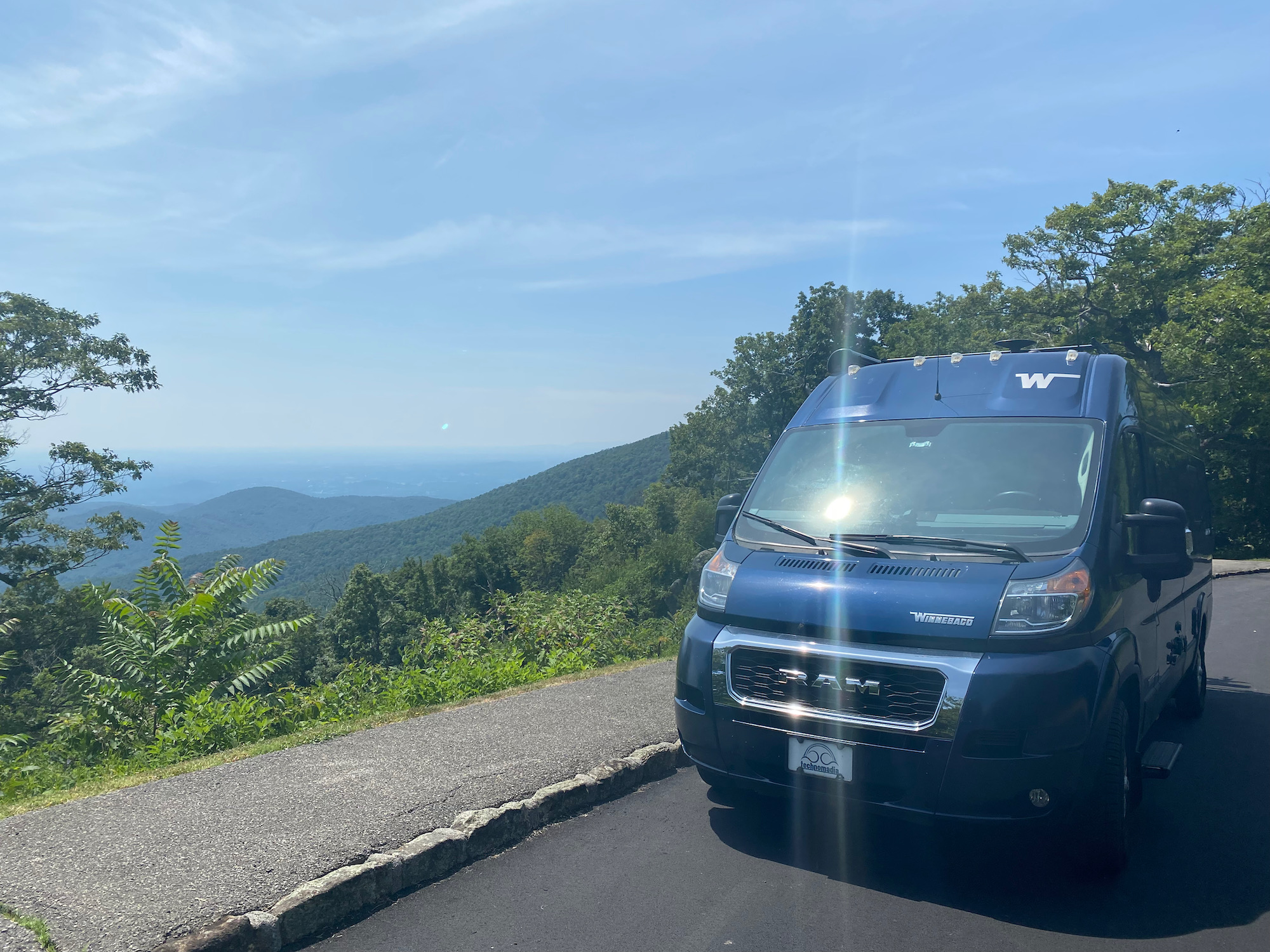
We shared recently about our amazing two week journey exploring the Blue Ridge Parkway in our Travato van conversion, so in this post we’re going to share some general tips for RVing this scenic and historic mountain drive.
First, our video version of these tips:
Tip 1: Ideal RV Size
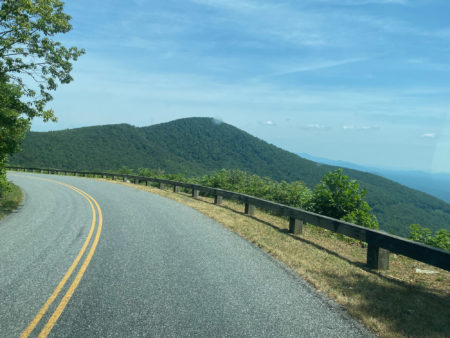
The Blue Ridge Parkway was designed for non-commercial traffic, and primarily for automobiles.
With its twisty roads, sharp turns, steep inclines, no shoulders and 26 tunnels (one with a maximum height of 13′ 1″) – it’s simply not designed or intended for larger vehicles.
RVs are completely welcomed however, but in our personal experience the Parkway is best done in smaller units.
We were completely comfortable in our 21′ van, and we’ve done parts of the Parkway in our former 17′ trailer pulled by a truck.
And on both trips, we saw many RVs in the 25-30′ range successfully having fun navigating the Parkway.
But much larger than that? You’re likely going to be white knuckling it, holding up traffic and just generally not having as fun of an experience.
If you’re super comfortable driving your rig, backing into tight campsites and mountain driving, you may do just fine if you plan your entry and exits well, and avoid the low clearance tunnels.
While we also have a 35′ vintage bus and are super comfortable driving it, we likely wouldn’t attempt the Parkway in it. Especially not towing a car behind as well. While the photos would be iconic, it just wouldn’t be a fun experience.
That said, we did see some 35-40′ Class-As and 5th Wheels attempting parts of the Parkway. But we would imagine many were staying in campgrounds off the Parkway, as the number of sites suitable for such RVs are very limited. We even saw a large 5th Wheel pulled by a large truck attempt one of the campgrounds, and end up finding an alternate stay after unsuccessfully trying to fit into the largest of the sites.
Tip 2: Official National Park Campgrounds
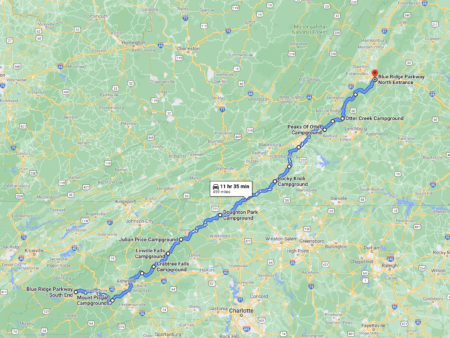
There are eight official National Park Campgrounds along the Parkway. We stayed at all but one of them on this trip.
All of the eight official campgrounds are $20/night and are dry camping with no hook-ups. All of the RV/Trailer loops have generator hours of 8a – 9p. Each campground however does offer a dump station, potable water and restrooms with flush toilets. Two of the campgrounds (Mount Pisgah and Julian Price) also offer showers.
The campgrounds are nicely spread out along the 469 miles of the Parkway making driving between just a couple hours at most, although some are closer together than others.
All of the campgrounds offer both reservable sites online at Recreation.gov and ample first come first serve sites you can snag when you arrive. Reservable sites that aren’t reserved are fair game as well upon arrive on a night-by-night basis (as the online reservation system cuts off reservations 48-hours in advance, so you can sometimes snag them for a couple nights.)
We highly recommend the first come first serve route.
First, this will give you ample opportunity to adjust your pace as you go. At each stop, there are generally a combination of hikes, tours, visitor’s centers, dinning and more. And sometimes it just feels good to listen to your body and take a day or two off of active exploring.
But more importantly, the suitability of each campsite varies so much. Most of the sites are pretty small, designed for smaller RVs or a car/tent setup. Very few sites, even if long enough, are suitable for larger RVs. Some are even angled the wrong way for an RV to back into or have the ‘yard’ to the rear of the spot.
And these are older mountain campgrounds where the word ‘level’ is a subjective term. If you have a single axle trailer, you of course have more flexibility to make an unlevel site work – but otherwise, you’ll probably want to choose your site when you arrive.
And the privacy of cell signal of the sites is highly variable within a campground.
To find the right site for you, it’s best to just drive through the loops and select what works for you and your setup. These campgrounds are intentionally setup to be flexible for those without reservations.
At all of the campgrounds, you arrive to a small ranger or camp-host staffed check-in station. If you don’t have a reservation, you’re instructed to go find a site – either one marked as first come first serve, or reservable site without a tag. And then you return to register. It’s very flexible, and we encountered no issues snagging sites without reservations – especially by arriving early in the afternoon.
With short driving days between campgrounds, we generally planned to leave our campground late morning before check-out time (11am), drive an hour or two to the next, and then arriving early afternoon – which meant the campground was pretty open. During peak times, arriving later in the day you might encounter more issues.
Tip 3: Vans – RVs or Tent Sites?
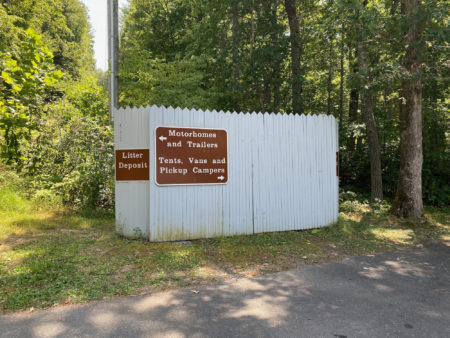
We were really surprised at the variability of how our van was considered in each campground.
Even some campgrounds with signs pointing to the ‘Tent / Van’ loop – we would be directed to the RV / Trailer loop instead because a 21′ van was considered too large for the “van” loop. And in some campgrounds, we were proactively invited to select sites in the tent loop, as long as we promised not to use a generator.
The advantage of the tent loop (to us) is that no generators are allowed. We don’t have one in our Travato, and our lithium batteries charge up on each drive. In the RV/trailer loop we ran the risk of having a generator dependent neighbor, which can ruin the tranquility of our stay and our ability to get filming done.
So if that’s important to you too, and you have a smaller RV – definitely do ask if your RV is allowed in the no-generator tent loops.
Tip 4: Mobile Internet Connectivity
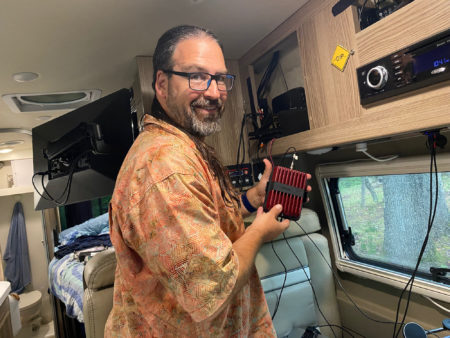
Keeping connected along the Blue Ridge Parkway is a challenge, you are traveling in mountainous terrain where cellular signal can easily be blocked – despite what coverage maps might say.
At most of the 200+ overlooks, you can usually find enough of a whiff of signal to check e-mail while you take in the scenery. And we kept generally online most of the time while driving with few extended breaks from signal.
But the campgrounds are usually lower in elevation and more tucked in than the overlooks, and staying connected can definitely be challenging. If you need to keep connected, having some redundant options to try definitely helps.
In general, we found AT&T to have the best overall signal and connection, but occasionally Verizon was the winner. T-Mobile/Sprint were only slightly useful in this area.
In some locations, our dual modem setup with ability to bond was extremely useful. Sometimes our external antenna was all we needed, and in one location we actually broke out our weBoost Drive Reach booster and got online with Verizon (Otter Creek). In others, just our phones picked up enough signal and we actually clocked nearly 300 Mbps without any enhancing gear on AT&T in Doughton Park. And in others, nothing we did helped (Linville Falls and Julian Price are pretty much guaranteed dead zones).
You can view our personal Mobile Internet Setup if you want to learn more about how we stay connected.
If you’re one of our premium members over at the Mobile Internet Resource Center (our day job), we turned the trip into a case study – documenting what we tried at each stop. Find it in our Testing In Progress Forum.
Tip 5: Driving
The Blue Ridge Parkway is made for driving, and each inch is scenic art. We recommend maximizing the experience by minimizing the stress.
The speed limit is 45 mph, but in many areas you simply won’t be able to go that fast as you’re navigating curves and inclines. Go at the speed that feels comfortable to you.
If you find vehicles are piling up behind you, it’s a lot less stressful for you and them if you find the next overlook to pull over and let them pass. We personally most enjoyed the drive by having no vehicles visible behind or in front of us.
There are over 200 overlooks, so there’s sure to be one really soon – use them. Most are easy on/off with ample parking. Get out, enjoy the view, stretch and enjoy. Some even have short hikes, which is a great way to take a break.
Also, you will find many bikers (the pedaling and motorized kind) enjoying the parkway. The pedaling kind of bikers are inspiring out there climbing those hills. Give them lots of space and exercise extreme patience, there are usually no shoulders for them to pull over for you to pass. You may find you simply have to go slow behind them until you can find enough of an open stretch with clear line of site to safely pass them. Don’t attempt to pass on a curve, as you just can’t see oncoming traffic.
Tip 6: Helping Fund the BRP
You’ll notice that there are no entrance fees to enjoy this national treasure, the only fees charged are for the campgrounds themselves.
As part of the terms of the land purchases for the Parkway, the government agreed to not charge tolls. Which means, there’s limited funding to upkeep this park. Amazingly, the roads are in great shape in most locations and some sections are periodically shut down for maintenance.
We were inspired by Blue Ridge Parkway Foundation, the official National Parks Service non-profit partner to improve and preserve the parkway – and made a donation.
We hope you enjoyed a taste of the Blue Ridge Parkway through our experience – and you’re inspired to include this adventure in your journey. If you’ve RVed the Blue Ridge Parkway, feel free to leave some tips of your own in the comments below to help others!












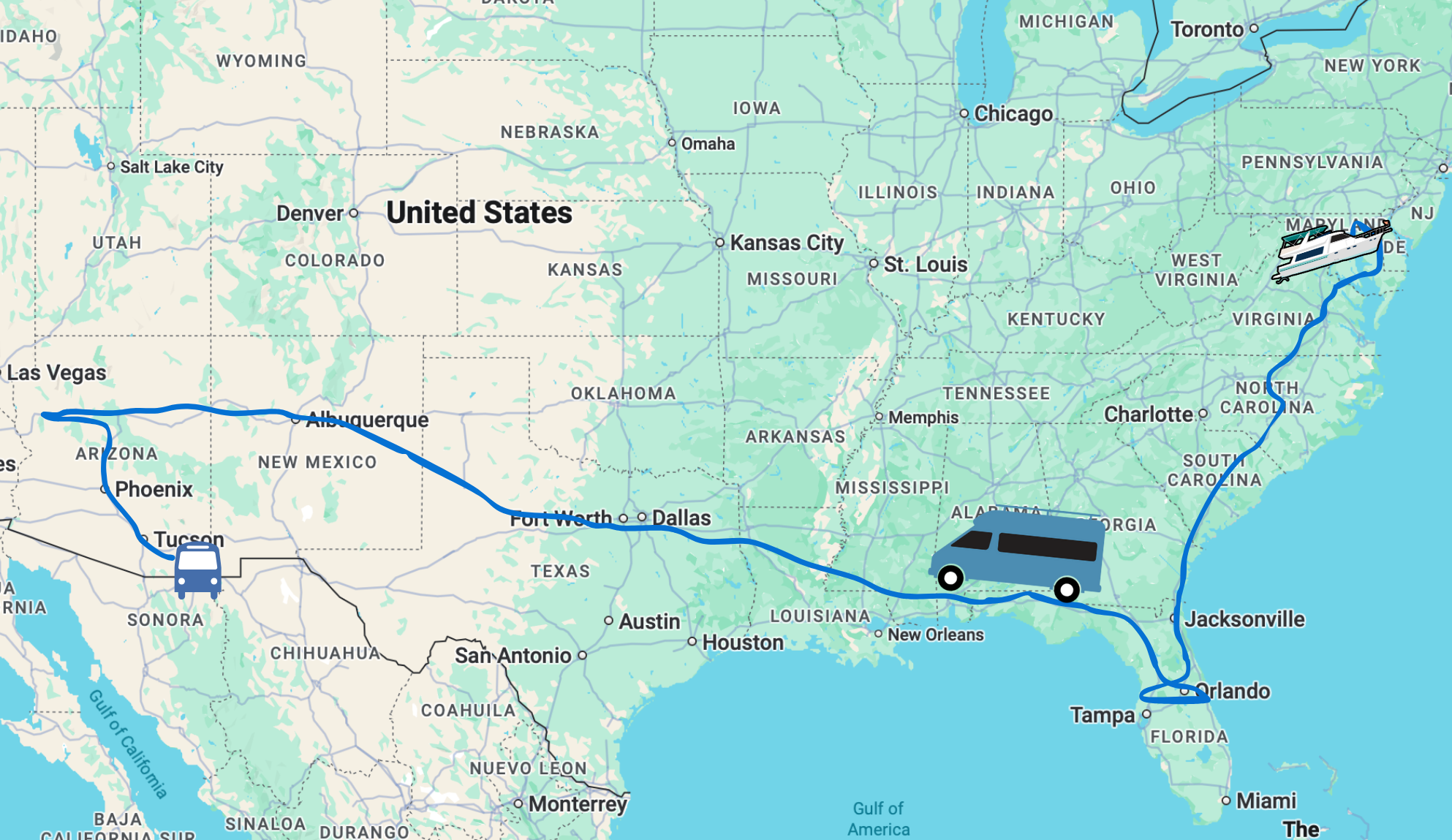
It sounds like you had an amazing time on the Blue Ridge Parkway, and your tips are super helpful! I love your advice on using smaller RVs for those tight, scenic curves and taking advantage of first-come, first-serve campsites for flexibility. Great reminder to support the Blue Ridge Parkway Foundation too—preserving this beautiful park is so important!
It has definitely been a white-knuckle drive for me in my 32′ C, and I will not drive it again unless I am in a much smaller vehicle. I drove from Mile 292 to Mile 408 today, and this was definitely not a fun drive because of the steep up and downs and the constant curves. (The sections between Mile 100 and 292 were much easier because they were less steep and curvy.) In fact, I almost bailed out, and I never do that.
I want to add curbs and low-hanging branches to your warnings. There are a lot of branches that hang over the roadway that constantly hit my 11′ 11″ tall vehicle–another reason to be in a B or automobile on this road! There were also bushes along the roadway that stuck over the pavement sideways. Because my vehicle is so wide, I often had to move over when another vehicle came from the other direction, and without a shoulder, ended up hitting the branches again! Also, a warning about curbs. There are some curves where drivers have obviously been driving beyond the pavement on the outside of the curve or cutting it short inside the curve. The park service solution is apparently to add curbs in these places, but they are squared-off and sharp, not rounded, so a blowout is a possibility–just more to add to the stress!!
My suggestion is to follow Technomadia’s advice about smaller vehicles. I also recommend taking the Natchez Trace from Nashville to Natchez, MS, as an alternative. It is a beautiful 444 mile parkway without stop lights, but on a much more modern highway with wider curves and very nice shoulders!!! Scenic, but much more relaxing.
I am also waiting for your tips on the Shenandoah Parkway!
I hope there is some money for National Parks in the new stimulus package. I did not have a good map of the parkway, and my GPS constantly wanted me to get off and take the freeway, but a problem was that the numbering is worn off most of the mile marker signs! Some of them look like they are ready to fall over, also. Overall, this made it hard for me to tell where I was. Maintenance of our national parks seems to always be cut from budgets first, so there is a lot of catching up to do.
I wish I had ordered a map to be sent to me before I took this long drive. It really would have helped, although I did stop a couple of times and look at the online one.
I am right now on the Blue Ridge Parkway, at about Mile 65, headed South, driving a 32′ Class C motorhome without a toad. You are right about the stress of driving along this curvy road, especially when other drivers are headed the opposite way–just not much room to pass.
I have one very important suggestion: DO NOT DRIVE ON A SUNDAY! Especially on the first 25 miles, there were a lot of day-trippers. This meant that I had to pass a lot of scenic view areas and places like the Humpback Rocks because there was absolutely no place to park. Cars were even parked on the grass and along the roadway, but with a wider and longer vehicle such as mine, plus the lack of shoulders on the parkway, I could not even park along the road and get my vehicle safely out of traffic. It is very frustrating to miss stuff and not even be able to take photos. In the last 15 miles, it has been a little easier to find a scenic view area that is not completely full.
I am camping at the Peaks of Otter tonight, and hopefully, tomorrow being a Monday will be a lot less busy. I am planning on driving all the way to Mt Pisgah, spending nights at Rocky Knob, Julian Price, and Mount Pisgah, arriving there on Wednesday.
The Blue Ridge Parkway with its steep inclines and no shoulders sounds beautiful and intimidating. Your valuable advice on what to expect will be much appreciated to be sure.
A wonderful trip. Thank you for sharing. I want to put this one my list — probably in a car — grin.
Thanks for all you do.
We did MP 0 to Asheville last year and finished up the final Asheville – Cherokee segment this past July. NPS campgrounds were closed last year due to COVID so we stayed at commercial campgrounds over the 6 night trip.
Cherie and Chris What great pictures! BRP is somewhere I will get to someday, thanks for all the tips, they will make the trip easier.
We saw a lot of commuter traffic when we drove the parkway–maybe because we drove later into the day. Since we were pulling off at scenic stops anyway it didn’t bother us except for the people who were in a hurry and thought we should get out of their way.
Although we haven’t RV-ed the BRP (yet!), we were on the stretch between (roughly) Boone and Linville Falls earlier in the summer. I’ll corroborate the report concerning the cell signal in that region—it’s catch-as-catch-can, even at some of the overlooks!
I’m curious—in the Roanoke, VA area, did you encounter what might be characterized as commuter traffic on the Parkway? Way back when, when I lived & worked in that neck of the woods, a couple of my colleagues used the Parkway for a couple of miles as part of the commute.
When we were passing through, the Blue Ridge Parkway was actually closed through Roanoke, and you had to detour through town. So by the measure, yes, it seemed the whole town was on our BRP detour 🙂